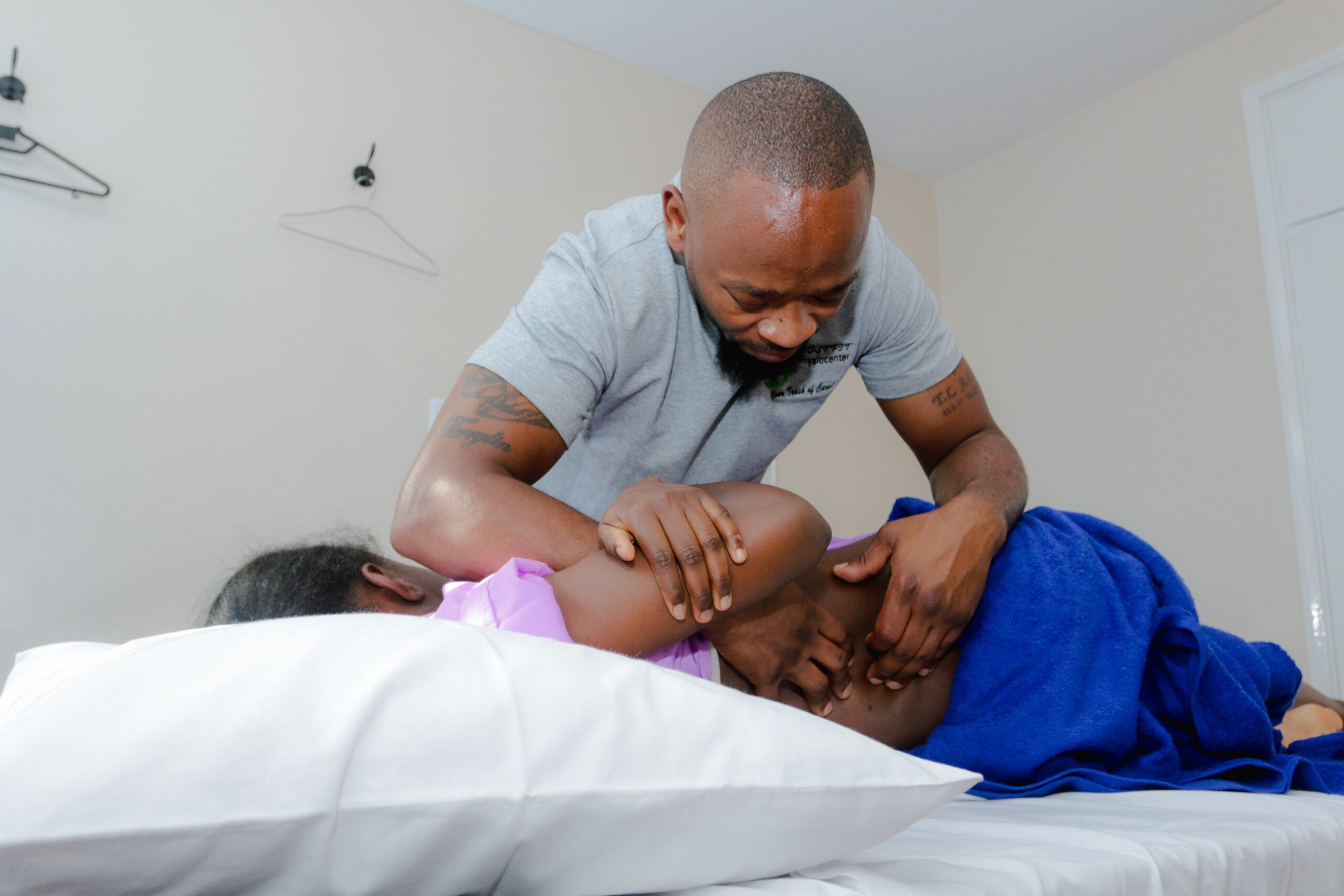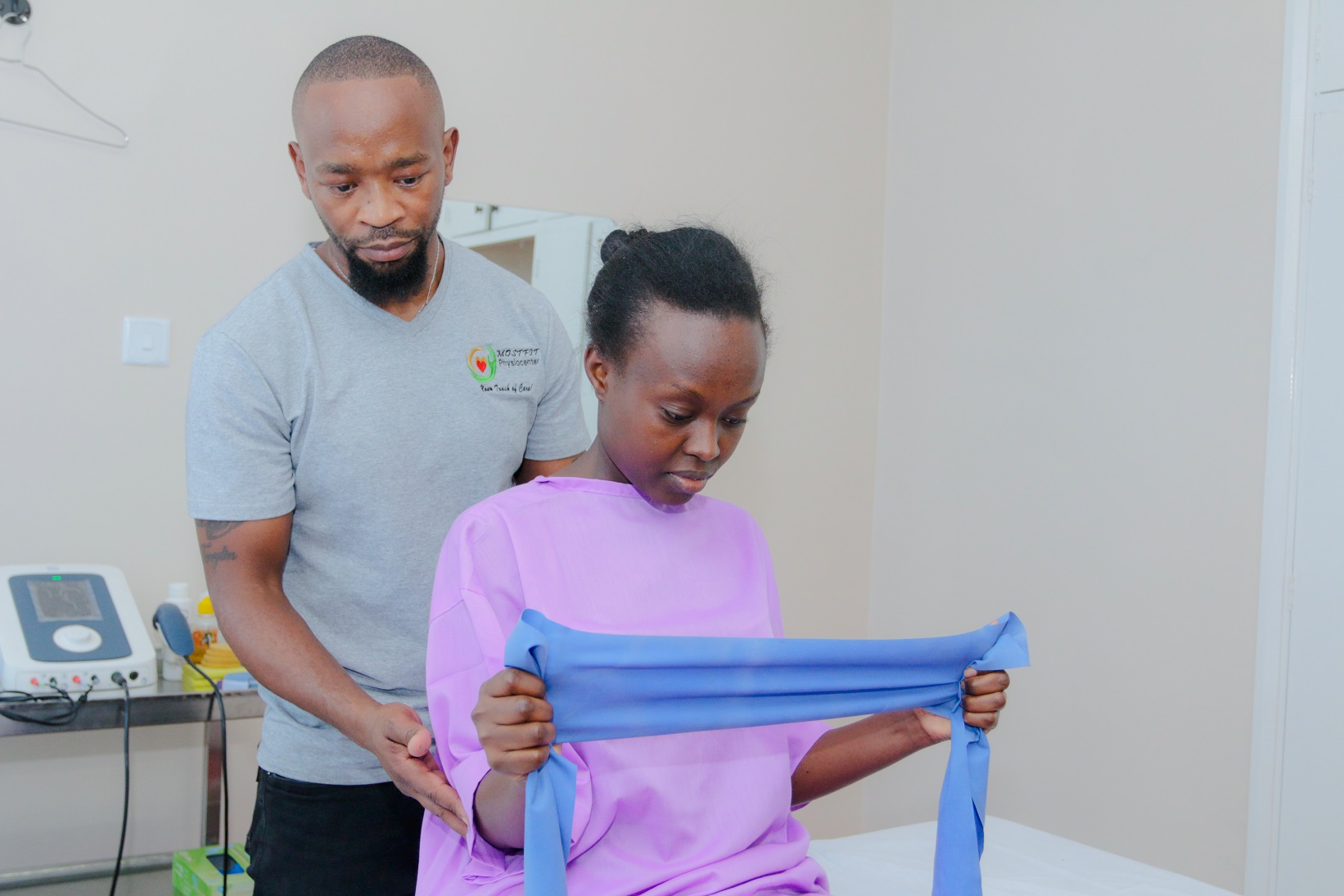Different Techniques Used in Physiotherapy Treatment
Physiotherapists are skilled healthcare professionals who utilize a variety of evidence-based techniques to help patients achieve their recovery goals. There are different techniques used in physiotherapy treatment all aimed at improving mobility, relieve pain and enhance general well-being of a person suffering from a condition that needs physiotherapy treatment. Below we look at the different techniques that physiotherapists apply to treat their clients.
Different techniques used in physiotherapy treatment
In order to achieve the desired results, physiotherapists use their training and experience to know what technique is ideal for each case. These techniques that are tailored to each individual’s specific needs and condition vary in duration,frequency and intensity. Here are some common and effective techniques used in physiotherapy treatment: 
- Reduce Pain: Pain can be debilitating, impacting every aspect of life. Physiotherapy offers a range of strategies to effectively alleviate pain without relying solely on medication. These include:
- Manual Therapy: This involves hands-on techniques such as joint mobilization, manipulation, and soft tissue release to reduce pain and improve joint mobility. Imagine a gentle, targeted massage that releases tension in tight muscles and improves the way your joints move.
- Therapeutic Exercise: Specific exercises are prescribed to strengthen weakened muscles, improve flexibility, and restore proper movement patterns. These aren’t just generic exercises; they’re carefully chosen to address your specific pain points and underlying issues.
- Electrotherapy: Modalities like ultrasound, TENS (Transcutaneous Electrical Nerve Stimulation), and laser therapy can be used to reduce pain and inflammation. Think of ultrasound as deep tissue massage using sound waves, while TENS uses gentle electrical impulses to block pain signals.
- Heat and Cold Therapy: Applying heat or cold can help reduce pain and inflammation. Heat relaxes muscles and increases blood flow, while cold reduces swelling and numbs pain.

- Improve Mobility and Flexibility: Stiffness and limited range of motion can make everyday tasks difficult. Physiotherapy helps restore mobility and improve flexibility through:
- Stretching Exercises: Targeted stretches help lengthen tight muscles and improve joint flexibility. These aren’t just static stretches; they often involve dynamic movements and specific techniques to maximize their effectiveness.
- Joint Mobilization and Manipulation: These manual techniques help restore proper joint movement and reduce stiffness. Think of it as a gentle realignment of your joints to allow for smoother, pain-free movement.
- Range of Motion Exercises: These exercises help restore the full range of movement in a joint. They might involve simple movements like bending and straightening a limb or more complex exercises that challenge your coordination and control.
- Recover Faster from Injuries: Recovering from an injury can be a long and frustrating process. Physiotherapy helps accelerate healing and facilitates a safe return to activity through:
- Targeted Rehabilitation Programs: These programs are designed to address specific injuries and guide you through each stage of recovery. They may involve exercises to regain strength, flexibility, balance, and coordination.
- Early Mobilization: In many cases, early mobilization (gentle movement) is encouraged to promote healing and prevent stiffness. This might involve simple exercises or movements performed under the guidance of a physiotherapist.
- Functional Training: This focuses on restoring your ability to perform everyday activities and return to your previous level of function. This might involve practicing specific movements related to your work, sport, or hobbies.
- Prevent Future Injuries: Prevention is always better than cure. Physiotherapists can help you prevent future injuries by:
- Identifying Risk Factors: Through a thorough assessment, physiotherapists can identify factors that may increase your risk of injury, such as muscle imbalances, poor posture, or improper movement patterns.
- Providing Corrective Exercises and Strategies: They can then prescribe corrective exercises, stretches, and lifestyle modifications to address these risk factors. This might involve strengthening weak muscles, improving flexibility, or correcting your posture.
- Educating on Proper Body Mechanics: Physiotherapists can teach you proper body mechanics for everyday activities, such as lifting, bending, and sitting, to minimize the risk of injury.
- Enhance Balance and Coordination: Balance and coordination are essential for everyday activities and preventing falls, especially as we age. Physiotherapy can help improve these through:

- Balance Training Exercises: These exercises challenge your balance and help improve your stability. They might involve standing on one leg, using a balance board, or performing exercises on unstable surfaces.
- Coordination Exercises: These exercises improve the communication between your brain and your muscles, enhancing your coordination and movement control.
- Vestibular Rehabilitation: This specialized form of physiotherapy can help individuals with balance disorders related to the inner ear.
- Improve Overall Quality of Life: By addressing physical limitations and improving function, physiotherapy can significantly enhance overall quality of life. This can translate to:
- Increased Independence: Improved mobility and function can allow you to perform everyday tasks more easily and independently.
- Reduced Reliance on Medication: By effectively managing pain and improving function, physiotherapy can help reduce the need for pain medication.
- Improved Sleep: Pain and discomfort can disrupt sleep. By reducing pain and improving comfort, physiotherapy can contribute to better sleep quality.
- Increased Participation in Activities: Improved physical function can allow you to participate in activities you enjoy, improving your social life and overall well-being.
What Can Physiotherapy Treatment Address?
Physiotherapy can address a wide range of conditions, including the following:

- Back Pain: Back pain can arise from various causes, including muscle strains, disc herniation, arthritis, and poor posture. Physiotherapy can help reduce pain, improve spinal mobility, strengthen supporting muscles, and teach proper lifting techniques.
- Neck Pain: Neck pain can be caused by muscle tension, whiplash injuries, poor posture, and arthritis. Physiotherapy can help reduce pain, improve neck mobility, and strengthen neck muscles.
- Sports Injuries: Sports injuries such as sprains, strains, ligament tears, and muscle pulls are common among athletes. Physiotherapy plays a crucial role in helping athletes recover from these injuries and return to their sport safely and efficiently.
- Arthritis: Arthritis is a degenerative joint condition that causes pain, stiffness, and inflammation. Physiotherapy can help manage pain, improve joint mobility, and maintain functional independence.
- Post-Surgical Rehabilitation: After surgeries such as joint replacements or orthopedic surgeries, physiotherapy is essential for regaining strength, range of motion, and functional mobility.
- Neurological Conditions: Neurological conditions such as stroke, multiple sclerosis, and Parkinson’s disease can affect movement, balance, and coordination. Physiotherapy can help improve these functions and enhance quality of life.
- Headaches: Tension headaches and cervicogenic headaches (originating from the neck) can be effectively treated with physiotherapy through manual therapy, posture correction, and exercises.
- Temporomandibular Joint (TMJ) Disorders: TMJ disorders affect the jaw joint and surrounding muscles, causing pain, clicking, and limited jaw movement. Physiotherapy can help relieve pain, improve jaw mobility, and restore normal jaw function.

- Respiratory Conditions: Physiotherapy techniques like chest physiotherapy can help individuals with respiratory conditions such as chronic obstructive pulmonary disease (COPD) and cystic fibrosis improve lung function and clear secretions.
- Women’s Health Conditions: Physiotherapy can address various women’s health issues, including pelvic floor dysfunction, prenatal and postnatal pain, and osteoporosis.
Different techniques used in physiotherapy treatment- Conclusion
Physiotherapy is a vital healthcare profession that plays a crucial role in restoring movement, reducing pain, preventing injuries, and improving overall quality of life. By utilizing a variety of evidence-based techniques and personalized treatment plans, physiotherapists empower individuals to achieve their physical health goals and live more fulfilling lives. Whether you’re recovering from an injury, managing a chronic condition, or simply looking to optimize your physical well-being, 1 physiotherapy can offer significant benefits.
Get specialized physiotherapy treatment at Mostfit Physiotherapy Center
Are you looking where you can get specialized physiotherapy treatment from experts at an affordable price? Mostfit Physiotherapy Clinic is your answer. We have experts in different fields of physiotherapy that you can benefit from. Our services are affordable and offered with a touch of care.
 Our areas of specialization include the following:
Our areas of specialization include the following:
- Respiratory Therapy Services
- Sports Therapy
- Electrotherapy Services
- Respiratory Therapy Services
- Manual Therapy Services
To book an appointment, use any of the following means:
Phone: +254 743 217 360
Email: info@mostfitphysiocenter.com
Clinic Location: inside Kenya Drapers compound on Ring Rd Parklands, Nairobi – 100 meters from “The Oval” on your way from Westlands.
We are dedicated to helping our clients enjoy pain relief, better mobility, and an improved quality of life.




 Our areas of specialization include the following:
Our areas of specialization include the following:
